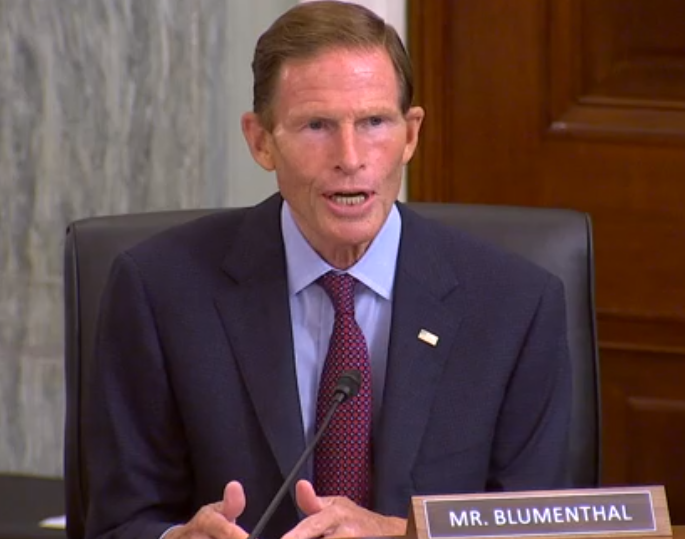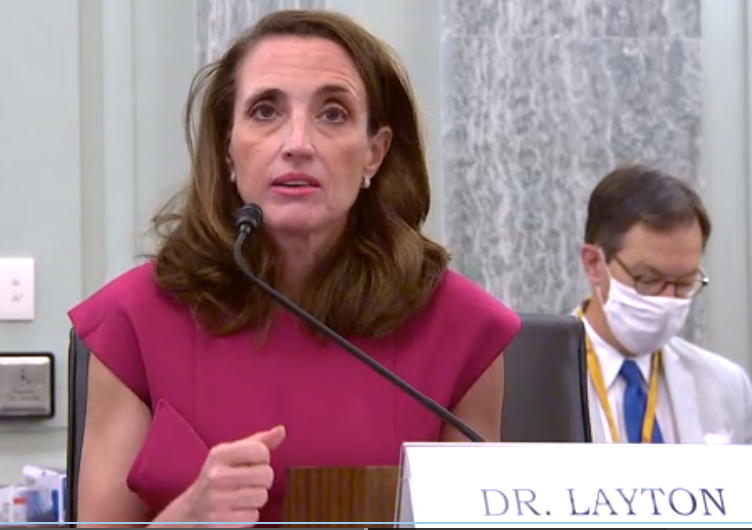Senate Hearing Covers 'Spectrum' of Issues
Between a series of votes and with conversations among both in-person and via-broadband witnesses and legislators, the Senate Commerce Committee vetted the current state of spectrum policy and broadband availability at a hearing Thursday (July 23).
Among the issues of the day was broadband connectivity funding and how to get more of it ASAP.
There was general agreement that rural deployment was a problem and a priority, particularly during a pandemic; that the data on where broadband is and isn't--thus where the money needs to be put, or not--is flawed and needs fixing; and that sharing as well as clearing spectrum was important.
The hearing came as the FCC launched its first mid-band spectrum auction--the CBRS band--something that was mentioned more than once during the proceedings.

Sen. Richard Blumenthal (D-Conn.) said that distance learning, job searches and more are hampered by the lack of connectivity. He said the FCC's Lifeline low-income subsidy program must get more money during the pandemic.
There was general agreement among the witnesses that more money for broadband was needed, including one suggestion that edge providers should have to contribute to broadband subsidies.
Related: Navajo President Says They Are at Bottom of Digital Chasm
Multichannel Newsletter
The smarter way to stay on top of the multichannel video marketplace. Sign up below.
Tom Power, SVP and general counsel of CTIA, advocated for Sen. Ed Markey's bill providing $4 billion for the Universal Service Fund E Rate subsidy for schools and libraries.
Mark Gibson, director of business development for CommScope, did not have a figure, but said more money could and should be put into broadband connectivity.
Michael Calabrese, director of the Wireless Future Project at New America's Open Technology Institute, said that OTI supports getting more than $8 billion, essentially a Lifeline supplement, for broadband during the pandemic.

Rosyln Layton, visiting researcher from Aalborg University, said what the Lifeline program needed was major reform but, as to more money, she said that content providers whose video constitutes 80% of network traffic and clearly benefit from broadband network buildouts should have to kick in funds for broadband subsidies.
Related: Groups Petition Congress for Billions in Broadband Bucks During Pandemic
Blumenthal said he hoped his Republican colleagues in their soon-to-be-announced COVID-19 aid package proposal would include the necessary funds for broadband, whether E Rate or Lifeline. And while he said there may be a need to reform Lifeline, right now the focus needed to be funding the connectivity that closes the homework gap and digital divide.
Contributing editor John Eggerton has been an editor and/or writer on media regulation, legislation and policy for over four decades, including covering the FCC, FTC, Congress, the major media trade associations, and the federal courts. In addition to Multichannel News and Broadcasting + Cable, his work has appeared in Radio World, TV Technology, TV Fax, This Week in Consumer Electronics, Variety and the Encyclopedia Britannica.

